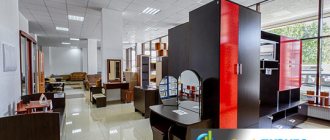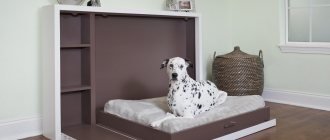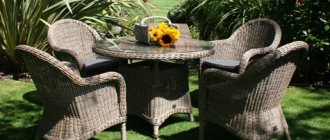Furniture is something that is found in every apartment; it surrounds us everywhere, from store shelves to a bench in any public garden.
Furniture is an important interior detail; it can be made to order or ready-made options can be purchased; you can create a highly profitable business with a business idea for furniture production.
Creating a furniture business from scratch is not an easy task.
First of all, you should plan everything well and think through every detail.
If you create a separate store selling furniture, you should find a factory from which you will purchase goods, rent a room, advertise and you can start selling.
But as for a private furniture workshop, everything is much more complicated.
Where to start furniture production
First of all, you should find a room where the products will be manufactured; a garage may be suitable, but it is important that it is heated and that all the tools, machines and decorative elements necessary for production are available.
The advantage of such furniture is that the finished product is many times more expensive than the material used for it, which is certainly a huge plus.
Also, furniture made in a private workshop will be considered elite, and if it meets the quality, it can easily establish itself in the market, which is important for a start-up business.
Don't forget about product certification. Office furniture, educational furniture, and children's furniture require mandatory documentation. Household furniture must also be declared.
Before starting production, first of all, you need to analyze the market for furniture products in order to know what the demand and price for the products are.
This business is perfect for a person who loves to work with his hands and has a good imagination.
Direct material costs
We move from materials to accounting for direct costs. High-quality accounting ensures saving resources and setting reasonable prices for products.
So, let's start with the release of materials into production. Here the accounting department and the economic department must work harmoniously, like the mechanism of a Swiss watch. Economists form releases for production based on specifications received from technologists. They are responsible for the preparation of primary documents, on the basis of which the accounting department will reflect the corresponding transactions in accounting. The material released is accounted for by quantity, area, volume or weight, as well as cost.
It is worth talking in more detail about the primary vacation documentation. If the consumption of materials deviates from the specification, so-called signal documents are drawn up. If there is a shortage of raw materials or parts, a demand act is formed. It allows you to take into account the release of inventory in excess of established limits. If the regular release into production and the additional one are documented in different documents, the analysis of replacements and overruns will be simple and convenient. Also, accounting will have the opportunity to determine the impact of additional release of materials into production on the cost of finished products.
In production accounting, a large number of documents are used: picking lists, cutting cards, plan-factual detailed sheets, etc. Data from them is accumulated, analyzed, and reflected in accounting records in accordance with current accounting regulations.
Furniture manufacturing technology
Private production of furniture means exclusivity of products; furniture models made from rare wood species are in great demand.
First of all, in such a business it is worth developing a customer base, since not everyone can afford to purchase such a product.
Most often, the buyer is confused by the production time, because it is longer than that of factory-made furniture, and the price range (handmade will always be more expensive).
When producing stamped types of furniture from laminated chipboard, you can try to establish cooperation with a furniture store and produce goods at low prices for sale.
This is a good option if the product is in demand and the store will be happy to take furniture for sale.
So gradually from a small business you can grow into a large-scale furniture factory.
Furniture intermediary trade
As already noted, furniture trade can be carried out using an intermediary scheme. In this regard, first of all, it should be emphasized that within the framework of intermediary relations, different options are also possible.
- A store may enter into an intermediary agreement with a manufacturer or wholesaler of furniture and not actually sell the furniture purchased as the store’s property, but provide intermediary services to the manufacturer (wholesaler).
- A furniture showroom (shop) may well enter into an intermediary agreement with the buyer. In other words, a salon (store) can act as an intermediary in selecting the best option, making a transaction with the manufacturer (seller) and delivering furniture in the interests of a person wishing to buy certain furniture. In such a situation, it turns out that first an intermediary (for example, agency) agreement must be concluded with the buyer of the furniture, and then on its own behalf or on behalf of the final buyer of the furniture, depending on the terms of the intermediary agreement, the furniture store will enter into a corresponding agreement with the manufacturer or a furniture wholesaler.
In any case, the revenue (income) of the intermediary, both in accounting and tax accounting, will be considered only his intermediary (commission, agent) remuneration, and not the entire amount received at the cash desk or into the intermediary’s accounts from buyers. Let us recall that values that actually enter the trading organization, but do not belong to it, must be taken into account off the balance sheet.
In particular, goods received on commission, that is, furniture that belongs to manufacturers or wholesalers, but is transferred by them for sale to a furniture showroom under an intermediary agreement, is reflected in account 004 “Goods accepted on commission.” And furniture purchased under an intermediary agreement with the buyer (and, accordingly, owned by this buyer, although in fact it may be in a warehouse or at the disposal of a furniture store for some time), should be reflected in account 002 “Inventory assets accepted at responsible storage."
Where to start a furniture business
There is no need to rush and start with complex projects; first, you should practice on models of standard beds and wardrobes.
With experience, you will be able to move on to making kitchens and various walls with many details and decorative inserts.
You can make furniture not only from ready-made sketches, but also from your own sketches.
The second option will be more exclusive, and the cost will be correspondingly higher.
The profitability of such a business starts from 80% and above. Which is a very profitable business.
Where are the complications and hidden fees? Always 1,730,000, no exceptions?
Not always, but it’s easy to understand the nuances. Let's start with the pleasant things.
You are entitled to benefits if you find yourself on the list:
• Are you registering an individual entrepreneur for the first time? 25% discount for the first 3 months, congratulations! • Are you 60 years old? Or 55 if you are a girl? Get 20% off for life! Good health to you! • Do you have three children under 18? 20% discount until children are older. • More benefits are available to disabled people and parents of disabled people - look for this information in Article 297 of the Tax Code.
This is where the pleasant ends and the nasty begins.
You'll have to pay more if you earned TOO MUCH:
If gross revenue is more than 40 single tax rates (for Minsk - 69,200,000), the state will require 5% of the excess amount.
Gross revenue is all the money you make from your small furniture business. Forget about margins, profit-loss, income-expenses and daughters-mothers - they will only confuse you. Remember this:
All the money that came to you and that is related to your business is gross revenue.
It consists of income from sales and “non-operating income”, the essence of which we will explain below.
Here is an example of calculating tax when the revenue threshold is exceeded:
You are a great fellow and you have completed 10 kitchens in Minsk in a month. Each kitchen costs 10,000,000 rubles, so in total you received 100 million. This is more than the threshold of 40 tax rates:
1000 000 = 30 800 000.
Let's call this amount the money difference , we like the way it sounds. Next month, 5% of this money will have to be paid back.
30,800,000 x 5% = 1,540,000.
Total for the month you will pay 1,730,000 (single tax) + 1,540,000 (interest on the difference) = 3,270,000.
The merchant has enough money to buy zukerki and marizan.
How to expand furniture production
As for business expansion, it will not be difficult.
You just need to rent a large premises and purchase the necessary tools for large-scale production and hire workers.
If possible, you can open a furniture store next to your own workshop, which will sell goods from the private workshop.
Such an expansion will require about 100,000 rubles, which is not a large amount at this time.
Selling furniture on credit
Furniture is often a very expensive product, and therefore it is often sold on credit. And there may be options here too.
- A loan for the purchase of furniture can be provided to the buyer by a bank or credit institution. The loan agreement is concluded between the buyer and the bank (credit institution), even if the paperwork is actually completed by a trained employee of the furniture showroom (or a representative of the bank, for whom a workplace is equipped right in the showroom for the convenience of buyers).
In this case, the furniture store will immediately receive the entire amount - from the buyer (if a first payment for the furniture is provided at the store’s cash desk) and from the bank (in the amount of the loan provided to the buyer, taking into account his down payment, if any). The buyer will make all further payments on the loan with the bank, and the furniture showroom will no longer have anything to do with them.
Therefore, the accounting entries in this option are not fundamentally different from ordinary retail sales: the accountant recognizes revenue in the amount of the full cost of the goods and reflects the receipt of funds directly from the buyer and from the bank (credit institution), as a result of which settlements with the buyer are “closed.”
- The store itself can provide a loan (installment plan). According to Art. 488 of the Civil Code of the Russian Federation, the sale of goods on credit includes cases where the purchase and sale agreement provides for payment for the goods within a certain time after its transfer to the buyer. In such a situation, the contract may well establish the buyer’s obligation to pay interest in an amount corresponding to the price of the goods, starting from the day the goods are transferred by the seller. And unless otherwise provided by the purchase and sale agreement, from the moment of transfer of the goods to the buyer and until payment, the goods sold on credit are recognized as being pledged by the seller to ensure the fulfillment by the buyer of his obligation to pay for the goods. In addition, an agreement on the sale of goods on credit may provide for payment for the goods in installments - in several payments over a certain time (Article 489 of the Civil Code of the Russian Federation).
In these cases, in accounting, revenue is recognized at the time of transfer (shipment) of the goods (or at another moment of transfer of ownership to the buyer depending on the terms of the contract), and at the same time, on account 62, the buyer’s receivables for furniture are formed, which he will repay in accordance with with a payment schedule or within the terms specified in the contract.
This debt will remain on the balance sheet until it is fully repaid. And since, as a general rule, until the goods are fully paid for, they are considered to be pledged to the seller, the accountant of the furniture showroom needs to reflect this goods on off-balance sheet account 008 “Securities for obligations and payments received.” In accordance with the Instructions for using the Chart of Accounts, the amounts of collateral recorded in account 008 are written off as the debt is repaid.
We invite you to familiarize yourself with: Deadline for submitting documents upon request from the tax authorities
Some difficulty within this scheme is caused by the procedure for reflecting interest on a loan provided by a store. The easiest way is if interest is already included in the price of the product. That is, interest as such is not accrued and there is no mention of it in the contract, but the price of the product for customers purchasing it on credit (in installments) is initially set at a higher level than for those who pay the entire cost at a time.
For example, each product has a certain set of prices depending on the terms of payment. It is also possible that customers purchasing goods in cash are given a discount for immediate payment, that is, the sales price is essentially the price set taking into account the cost of a commercial loan.
Example 1. A furniture showroom provides its customers with the opportunity to purchase goods in installments without resorting to the services of credit institutions. All prices for furniture are set taking into account the provided installment plan (that is, interest on the loan is already included in the price), and those buyers who prefer to pay for the product at a time when purchasing it are given a discount for immediate payment in the amount of 15% of the cost of the product.
The terms of the installment plan are as follows: 20% of the cost of the goods must be paid by the buyer upon concluding the sales contract, the remaining amount is repaid in equal installments within 10 months. Ownership of the furniture is transferred to the buyer immediately at the time of its shipment (transfer), but until the buyer’s debt is fully repaid, the goods are pledged to the store.
In June 2012, the buyer purchased a soft corner worth 100,000 rubles on an installment plan. Let us assume that all payments will be made by him on time (from July 2012 to April 2013 inclusive) in cash at the salon cash desk. The purchase price of this product is 55,000 rubles. (goods are recorded at purchase prices, the organization applies a taxation system in the form of UTII).
| Contents of operation | Debit | Credit | Amount, rub. |
| In June 2012 | |||
| The down payment from the buyer was received at the cash register (RUB 100,000 x 20%) | 50 | 90-1 | 20 000 |
| The remaining portion of the revenue from the sale of goods is recognized | 62 | 90-1 | 80 000 |
| The purchase price of the goods sold is written off | 90-2 | 41 | 55 000 |
| The cost of unpaid goods pledged by the store is reflected | 008 | 80 000 | |
| The financial result is reflected 0) rub. | 90-9 | 99 | 45 000 |
| Monthly from July 2012 to April 2013 inclusive | |||
| Another payment received from the buyer (RUB 80,000 / 10 months) | 50 | 62 | 8 000 |
| Reduced amount of collateral received | 008 | 8 000 |
But what to do if interest under the agreement is calculated separately, that is, when a fixed price is set, the same for all buyers, but if an agreement is concluded that provides for the sale on credit (in installments), it specifies the interest rate and the procedure for calculating them , and, accordingly, the amounts received from the buyer actually represent two payments - to repay the principal cost of the goods and to pay interest on the loan (installment plan){q}
Based on the requirements of clause 6.2 of PBU 9/99, this situation, from an accounting point of view, is no different from the case when interest is included in the price of the goods. Indeed, this norm directly states that when selling goods on the terms of a commercial loan, provided in the form of deferment and installment payment, the proceeds should be taken into account in the full amount of receivables.
Similarly, in paragraph 2 of Art. 249 of the Tax Code of the Russian Federation stipulates that revenue from sales should be recognized in tax accounting - both under the general regime and under the simplified tax system - based on all receipts associated with payments for goods, works and services sold. Thus, at the time of transfer of goods, it is necessary to reflect both the revenue and the buyer’s receivables in the full amount of payments that he will have to make under the contract, including all interest provided for in the payment schedule. However, in practice it is necessary to pay attention to the specific terms of the agreement on the procedure for calculating interest.
This scheme will work normally only if the agreement strictly regulates both the amount and procedure for making payments (in particular, it prohibits early repayment of debt or, at least, does not provide for recalculation of the amount of interest), so that the total amount of interest that will be paid by this buyer, calculated and recorded in advance.
If, under the terms of the agreement, interest is calculated based on the balance of the principal debt (the outstanding sale price of the goods) and the buyer has the right to make subsequent payments in various amounts based on his financial capabilities and desires (but not lower than a certain minimum payment), at the time of sale (transfer) buyer) of the goods, the accountant is not able to determine the exact amount of interest that will be received under this particular agreement.
This problem can be solved in one of two ways, and the chosen option must be specified in the accounting policy. The first option is to recognize revenue “in parts”. That is, interest charged for the sale of goods on credit (in installments) is still recognized as revenue, but is charged to account 90 “Sales” only when their amount becomes determined based on the specific terms of the contract.
In this option, the initial revenue is recognized in the amount of the sale price of the goods, as well as that part of the interest that can be unambiguously calculated at the time of transfer of the goods (transfer of ownership of them to the buyer) based on the terms of the contract, for example, for the first months of installments, if the contract provides moratorium on early repayment of debt during these months and, therefore, the amount of interest for these months can be accurately calculated.
And in the future, the accountant also makes additional monthly entries on the credit of account 90 “Sales” for the amount of interest, that is, he adjusts the revenue taking into account the interest that is accrued for the next month according to the terms of the agreement (including based on the actual balance of the buyer’s debt).
How much can you earn in the furniture business?
Approximately, such a business pays off completely within 2-3 years. Every year from such a business you can receive up to 40% of the total profit, which is very impressive.
You shouldn’t stop and give up positions, otherwise you can become easy prey for a competitor.
The main thing is to stay on the market and not stop production. More resourcefulness - and the production will certainly become a leader in the furniture manufacturing market.
Also, don’t forget about home delivery. If such a function is established in production, it will be a big plus.
It is worth remembering that the best advertising is word of mouth.
The more satisfied customers there are, the better the word will be about production, which will only be beneficial for a start-up business.
It is important to know that the market is gradually becoming saturated.
There are quite a lot of manufacturers and most often they produce similar products. Don't forget about individuality.
The import of furniture from Belarus plays an important role. It will cost much less, since there is almost no import duty.
It is worth focusing on legislative acts, for example, some areas of sales require a certain area for the sale of a particular product.
For example, after such changes in the pharmacy business, the furniture market for pharmacies doubled.
The sofa segment is now developing well.
Production does not require a lot of equipment and material; the following is sufficient:
- sewing machine,
- saws,
- upholstery gun.
On average, the cost of producing one model will be about 3,000 rubles.
How to properly record furniture in accounting
The form is fixed by the Resolution of the State Statistics Committee dated January 21, 2003. No. 7. To finally understand what type of equipment office furniture belongs to, you need to familiarize yourself with clause 5 of PBU 6/01.
Info
According to the provisions of the regulatory document, if all the conditions set forth in clause 4 are met in relation to an object, but its cost does not exceed 40,000 rubles, then it can be taken into account as inventory. To preserve such property in production, it is necessary to organize proper control over its movement.
Based on the statement, it turns out that office furniture is part of the inventory. If a company purchases inexpensive items, they are all reported as inventory. In addition, the company maintains control over the movement and safety of purchased property.
What documents are needed to open
It will be necessary to undergo state registration as an individual entrepreneur or legal entity. For individual entrepreneurs, a minimum package of documents is provided:
- application and photocopy of passport;
- state payment receipt fees and opening a bank account;
- registration.
For legal entities additionally required:
- charter and resolution of shareholders;
- information about the director and chief accountant;
- address of the legal entity.
In addition to obtaining a certificate of registration as a business entity, you will need to have:
- certificate for finished products;
- certificates for the materials used.
Auxiliary materials
Everything that is not the basis of the furniture belongs to auxiliary materials. Inventory, spare parts, additional components are taken into account in subaccounts to account 10-1. Separately, the accountant will have to record parts, structures, components and purchased semi-finished products, spare parts for equipment for CNC machines and other technological equipment, accessories and household equipment, other materials (small consumables: film, antiseptic, glue, paint, varnish, hardware).
Also, a separate sub-account is opened to account for materials transferred for processing to third parties. It is used when sending chipboard or, for example, plywood to contractors and receiving back finished products made from them.
Auxiliary materials include special clothing and equipment. Moreover, products in operation and storage are divided and held in different subaccounts. The same applies to personal protective equipment used by furniture company employees.
For analytical accounting, auxiliary materials, like the main ones, are grouped according to common characteristics.
What are these “non-operating income” that they promised to talk about? Is there a “fool’s trap” somewhere?
Yes, there is a complicated nuance here.
Gross revenue includes more than just income from the sale of kitchens (or what have you?). Money that seems to have appeared on its own is also credited there:
• Fines and penalties paid to you by clients and partners. • Interest from bank accounts that you use for business activities. • The cost of all goods and services that you received for free and use for business.
Another category of income that is recognized as non-operating is money and property associated with loans and repayments. It’s simple to protect yourself from mistakes on this topic: don’t borrow or lend.
And if suddenly this happens, immediately run to read paragraphs 6.6, 6.6(1), 6.6(2) in Article 176 of the Tax Code.
How to find clients for a manufacturer
Faced with the activity of competitors, a novice entrepreneur will inevitably think about how to promote a furniture business. It’s easier for experienced craftsmen: for them, the main source of orders is people’s recommendations. A beginner will have to try hard to find his target audience and organize the sale of products. Which sales channels are effective:
- Advertising in the press. Glossy publications offer luxury furniture, while newspapers with free advertisements offer budget furniture.
- Specialized hypermarkets. Large construction stores allocate entire sections for household furniture and accept it for sale.
- Corporate clients. For manufacturers of retail, pharmacy or office furniture, direct mailing of offers to potential customers is suitable.
- Government clients. An official company has the right to take part in tenders for the purchase of furniture for schools, hospitals, and administrative institutions.
- Affiliate sales. When looking for buyers on the recommendation of interior designers and construction and repair teams.
- Social media. Promotion of the enterprise group on the Instagram and VKontakte networks brings two to three orders weekly.
- Notice boards. To sell furniture on Avito and similar resources, they take attractive photographs of the goods and come up with vivid descriptions for them.
- Own website. Attracting traffic to the company’s website in search engines and through contextual advertising will help you find new customers.
- Own store. For an enterprise that produces different types of furniture, it is more profitable to sell products at retail prices through a company showroom.
We purchase equipment
The next step is the selection and purchase of equipment and software. Here, too, you need to take into account your furniture specialization. For example, to start producing cabinet furniture you will need:
- Jigsaw.
- Milling machine.
- Format cutting machine.
- Lathe.
- Set of cutting tools.
- Sander.
- Screwdrivers.
To produce upholstered furniture, additional equipment is required:
- A circular saw.
- Stapler for furniture.
- Electric miter saw.
- Tables for cutting material.
- Sewing machines.
When choosing equipment, you need to take into account a number of factors: cost, quality, warranty period, operating comfort, repair and replacement time. Over time, when your production gets on its feet, you will be able to choose more complex tools and machines. Please note that after installing all the equipment, you will need to contact Rospotrebnadzor, the fire inspectorate and Gorenergo to obtain permission to begin work.
Don’t forget to purchase software – special computer programs for modeling, visualization and furniture design. They will not only help you understand what a closet or sofa will look like, but will also calculate the amount of material needed and even prepare cutting diagrams.
What kind of furniture is profitable to produce?
And in a small enterprise. When you have the necessary equipment, it is possible to produce any product - from soft ottomans to carved tables. But keep in mind that manufacturing exclusive products is an unstable income. Give preference to goods that are needed by mass buyers.
- Cabinet furniture. Kitchens, living room sets, hallways, wardrobes, shelving made from MDF, laminated chipboard or solid wood.
- Furniture for children's rooms, educational institutions. It is made from the same materials, but with constant safety monitoring. Products must be certified.
- Cushioned furniture. In the manufacture of sofas, ottomans, armchairs and beds, frames made of metal or wood, synthetic fillings, leather, and fabrics are used.
- Office furniture. Products for institutions do not require sophistication and flashy design. But they must be durable, practical and ergonomic.
- Trade furniture. This category includes products for shops, catering establishments, and pharmacies. The main requirements for it are strength and hygiene.
- Country furniture. To withstand heat, cold and humidity. That’s why it is made from stabilized wood, metal, plastic, and rattan.
materials for furniture production
Materials for furniture production
A modern wall or kitchen set is a high-tech product that combines metal, composite panels, polymers and glass. When planning to open a furniture manufacturing business, an entrepreneur must imagine what he will have to deal with:
- MDF. A material with a dense fibrous structure that can withstand cutting, milling and carving. Covered with polymers or veneer.
- Chipboard. Laminated boards are now used to make furniture. A durable film gives them their appearance and protects them from damage.
- Fiberboard. The material is not durable, but it handles cutting well. Fiberboard sheets are used to cover the back walls of cabinets and drawers.
- Array. Glued board made of oak, beech or maple is an expensive, but strong and durable material. Premium furniture is made from it.
- Glass. In production, glass and mirrors with a clean surface or sandblasted are used. Stained glass is found in expensive products;
- Accessories. To reliably connect parts and increase the functionality of furniture, various components are used: handles, gas lifts, hinges, drawer guides, adjustable supports;
- screws, corners, ties, confirmations;
- polymer films, PVC and melamine edges;
- chrome and plastic accessories, roof rails;
- lighting systems.
How much to pay is clear. How to do this and where?
Reporting payments is more difficult than paying. Therefore, let's start with reporting.
Once a month you need to submit a tax return to the inspectorate where you are registered. You can do it once a quarter if two conditions are met:
• Apart from furniture, you are not engaged in anything that would require payment of a single tax. Tax only for 1 type of activity • You have only one service facility or none at all.
For example:
You only have 1 serving object, even if you have:
1. pavilion at the construction market, where you communicate with clients and design kitchens;
2. a workshop where you saw chipboard and watch football away from your wife.
This is due to the fact that you are not present in both the workshop and the salon at the same time.
But as soon as you put a girl designer in the pavilion, there will be two service facilities - you will have to run to the tax office every month.
In the tax return, in addition to dashes, zeros and indices, which the sample and inspector will help you arrange, the 2 most important numbers are indicated:
1. Tax amount for the next month 2. Gross revenue for the last month
Step-by-step plan for starting a business producing wood products
The size of the premises for organizing a furniture business directly depends on the planned production volume. If we are talking about a full production cycle (and not a “garage version”), then the following departments must be present:
- Production workshop - the place where woodworking machines and other equipment will be located;
- Assembly shop - a place where wooden furniture is assembled from pre-prepared parts;
- Paint shop – a room for carrying out paint and varnish work;
- Dryer or drying chamber;
- Finished products warehouse/raw materials warehouse;
- Production staff room;
- Lavatory, shower;
- Accommodation for administrative staff and sales managers.
The requirements for the production premises are standard and require heating, water supply, ventilation, a 3-phase network, and a fire safety system.
Room
The proposed business plan for opening a furniture production workshop can be effective. It is necessary to successfully select a room that will meet certain requirements and have several departments. On its territory there should be located:
- Furniture production workshop – area not less than 100 sq.m. m.
- An office room where managers work, drawing up contracts and making sales. Here you can place exhibition stands where samples of work are presented.
- Warehouse space. Materials and finished products are stored - 70-100 sq. m.
All these premises must be located in the same building, but can be located in different parts of the city. It is better to choose an office with product samples in the center, where there is sufficient foot traffic. It is better to locate the warehouse next to the production workshop to reduce transportation costs.











